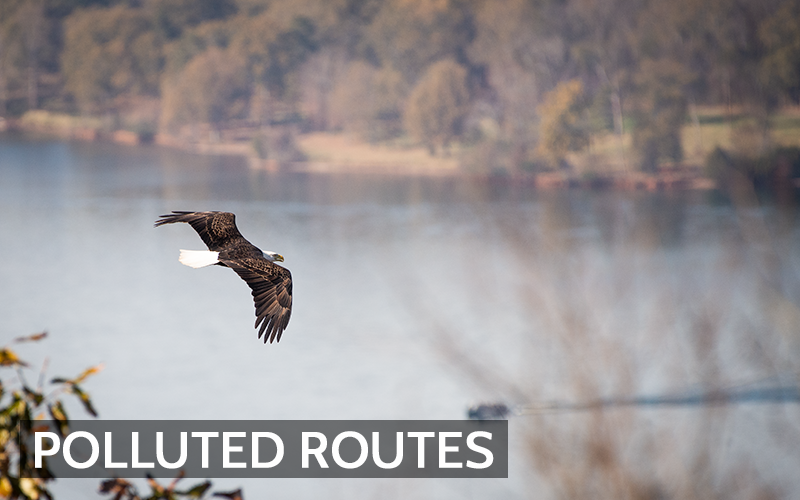Air pollution poses a significant threat to migratory birds, disrupting their intricate journeys and endangering their survival. Understanding these impacts and the conservation efforts in place is crucial for safeguarding these species and the ecological balance they maintain.
Impact of Air Pollution on Migratory Birds
Migratory birds traverse vast distances annually, relying on specific environmental cues and conditions. Air pollutants, such as ground-level ozone and volatile organic compounds, can impair their respiratory systems, reduce food availability, and alter habitats. Studies indicate that small migratory land birds, including sparrows, warblers, and finches, are particularly vulnerable to ozone pollution, which directly harms their respiratory health and indirectly affects their food sources1.
Mercury contamination is another concern. Methylmercury, a toxic form of mercury, accumulates in aquatic ecosystems and biomagnifies up the food chain, affecting birds that consume contaminated prey. This exposure can lead to neurological impairments and reproductive issues, compromising the birds’ ability to complete their migratory cycles2.
Conservation Efforts to Protect Migratory Routes
Recognizing the challenges posed by air pollution, various conservation initiatives have been implemented to protect migratory birds and their habitats.
North American Wetlands Conservation Act (NAWCA)
Enacted in 1989, NAWCA provides grants to protect and manage wetland habitats essential for migratory birds across the United States, Canada, and Mexico. The program encourages public-private partnerships to conserve wetlands, benefiting both wildlife and human communities3.
Neotropical Migratory Bird Conservation Act (NMBCA)
This act supports conservation projects that benefit neotropical migratory birds, which breed in North America and winter in Latin America and the Caribbean. By funding habitat restoration and research, NMBCA aims to address threats across the birds’ migratory routes4.
Collaborative Initiatives
Organizations like the U.S. Fish and Wildlife Service’s Migratory Bird Program lead efforts to protect over a thousand migratory bird species. Their work includes conducting surveys, managing habitats, and collaborating with international partners to ensure the conservation of these species throughout their annual cycles5.
Additionally, the Audubon Society’s Migratory Bird Initiative focuses on using the latest migration science to protect birds and the places they need across their full annual life cycles. By integrating data on species distributions and movements, the initiative informs conservation strategies to mitigate the impacts of air pollution and habitat loss6.
Community and Policy Actions
Local communities play a vital role in conservation. Engaging in habitat restoration projects, reducing pesticide use, and supporting policies that limit air pollution contribute to creating safer environments for migratory birds. Public awareness campaigns and citizen science programs, such as eBird, enable individuals to participate in monitoring bird populations and inform conservation efforts.
Policy measures, including the Clean Air Act, have demonstrated significant benefits for bird populations. Research indicates that improved air quality resulting from this legislation has saved approximately 1.5 billion birds over 50 years, highlighting the importance of stringent air pollution controls7.
Moving Forward
Air pollution presents a formidable challenge to migratory birds, affecting their health and the integrity of their migratory routes. Through concerted conservation efforts, policy implementation, and community engagement, it is possible to mitigate these impacts and ensure that migratory birds continue to thrive. Protecting these species is not only crucial for maintaining biodiversity but also for preserving the ecological balance that benefits all life on Earth.
Related Articles:
Air Quality Monitoring in the United Kingdom: An Overview
The Future of Green Spaces and Trees in Cities: Challenges and Innovations
References:
- https://news.cornell.edu/stories/2020/11/study-air-pollution-laws-aimed-human-health-also-help-birds
- https://www.allaboutbirds.org/news/birds-need-clean-air-safeguards-just-as-much-as-we-do-heres-why/
- https://en.wikipedia.org/wiki/North_American_Wetlands_Conservation_Act
- https://www.fws.gov/story/2024-10/shared-skies-monarchs-migratory-birds
- https://www.fws.gov/program/migratory-birds/what-we-do
- https://www.audubon.org/our-work/science/bird-migration-initiative
- https://www.allaboutbirds.org/news/clean-air-act-saved-1-5-billion-birds-through-action-on-ozone/


